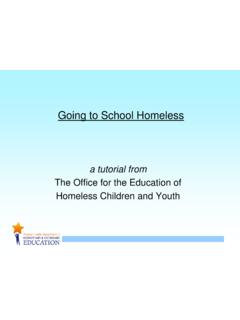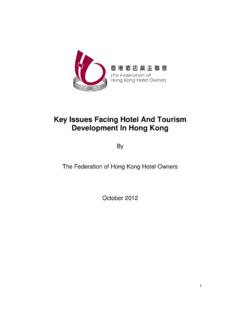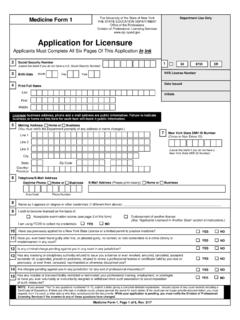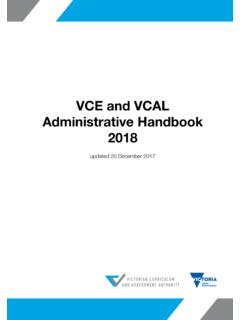Transcription of Migrant Workers in Rural Wales and the South …
1 Migrant Workers in Rural Wales and the South Wales Valleys Laura Jones and John Lever Final Report, February 2014. With contributions from Sophie-Wynne Jones, Jonathan Radcliffe and Michael Woods nts TABLE OF CONTENTS. Contents 1. Abbreviations used 2. Executive Summary 3. SECTION 1 INTRODUCTION AND METHODOLOGY 7. SECTION 2 STATISTICAL PROFILE OF Migrant Workers 17. SECTION 3 FAMILY AND COMMUNITY 30. SECTION 4 EMPLOYMENT AND THE WORKPLACE 39. SECTION 5 Migrant BUSINESSES AND ENTREPRENEURSHIP 47. SECTION 6 SERVICES AND EDUCATION 50. SECTION 7 CONCLUSIONS AND POLICY RECOMMENDATIONS 58. References 65. Appendices 67. 1. ABBREVIATIONS. A8 - Accession Eight Countries (Czech Republic, Estonia, Hungary, Latvia, Lithuania, Poland, Slovakia and Slovenia A2 - Accession Two Countries (Romania and Bulgaria). CEE - Central and Eastern European EAL - English as an Additional Language GLA - Gangmasters Licensing Authority LMCN - Llanelli Multicultural Network LEA - Local Education Authority MADF - Multi Agency Diversity Forum MELAP - Minority Ethnic Language and Achievement Project MWF - Migrant Workers Forum NINo - National Insurance Number NWREN - North Wales Race Equality Network PCVA - Polish Community of the Valleys Association PLASC - Pupil Level Annual School Census PWMA - Polish-Welsh Mutual Association, Llanelli SAWS - Seasonal Agricultural Workers Scheme SBS - Sectors Based Scheme SEAL - Social and Emotional Aspect of Learning programme WAL - Welsh as an Additional Language WRS - Workers Registration Scheme 2.)
2 EXECUTIVE SUMMARY. This executive summary provides an overview of research carried out by the WRO between May 2012 and October 2013 to investigate international economic migration to Rural Wales and the South Wales Valleys. Background The Wales Rural Observatory (WRO) was commissioned by the Welsh Government in 2012 to undertake a study into the situation and experiences of international Migrant Workers in Wales . This report builds on previous research into A8 migration to Rural Wales (see WRO, 2008); expanding the focus of inquiry to include A2 Migrant Workers from Bulgaria and Romania who joined the EU in January 2007, and extending the geographical scope to include the South Wales Valleys. This research has the following seven objectives: i. To quantify international migration to Rural Wales and the South Wales valleys, identify temporal patterns of arrivals and departures, and geographical patterns of domestic movement/ residence.
3 Ii. To update the 2008 survey of Migrant Workers , identifying changes in the characteristics and intentions of Migrant Workers , their social and economic situation, and community interactions. iii. To position recent labour migration from new EU member states in the wider context of international migration, including longer-established Migrant groups. iv. To analyse the pressures and implications from international migration on public services, including schools, health services and social services, and how responsible authorities are addressing these issues. v. To analyse the economic contribution of international migrants in Rural Wales , including positive and negative impacts on local labour markets, and contributions to socioeconomic development through entrepreneurship. vi. To analyse the interaction and integration of international migrants with local communities in Rural Wales , including formal and informal mechanisms to address cultural tensions and differences, the development of new cultural activities, and the development of language skills.
4 Vii. To identify examples of good practice and make recommendations for initiatives to support Migrant entrepreneurship and promote community integration through the Rural Development Plan. 3. Research Methods: A mixed methods approach was applied to data collection. Secondary statistical data was drawn from the Workers Registration Scheme (WRS), National Insurance Number (NINo) registrations, and the 2011 Census. Primary data collection involved three main phases. First, interviews were conducted with key stakeholders, including national and local government agencies, voluntary sector organisations, health boards, Trade Unions, and representatives of Migrant groups. The first phase also involved a literature review of reports on international migration. Second, a questionnaire survey was conducted with 109 Migrant Workers across four case study localities: 1) South Wales Valleys - Merthyr Tydfil;. 2) North Wales - Conwy, Anglesey and Gwynedd.
5 3) Carmarthenshire - Llanelli and Llanybydder/Lampeter; and 4) Mid Wales Welshpool. Recruitment took place though third sector organisations and local schools within the case studies. This phase of fieldwork included the recruitment of several Migrant entrepreneurs to participate in semi-structured interviews. The third phase of fieldwork involved a small number of repeat interviews with prominent Migrant support organisations to reflect on key findings. Key Findings and Recommendations: Trends in international migration to Rural Wales and the South Wales valleys: A8 migration has been a substantially Rural phenomenon; since EU enlargement, comparable numbers of A8 migrants have registered to work in Rural and urban counties of There are geographical variations in the distribution of A8 Migrant Workers across Rural Wales based on employment in Rural -linked sectors, such as food processing and tourism. Migration from Poland has continued to dominate new EU migration to Rural Wales and the South Wales Valleys, accounting for over three-quarters of A8 registrations in both areas.
6 The onset of recession coincided with a slow-down in migration from the A8 countries. Likely numbers of arrivals from Romania and Bulgaria ( A2 ) to Wales from 2014 remains uncertain. Updating the 2008 survey of Migrant Workers : Settlers have become a more visible trend since 2008: a large proportion of A8 migrants surveyed in Welshpool and North Wales have been resident in Wales for over five years. The migration intention of Poles in Merthyr and Carmarthenshire are also increasingly changing, from a short-term economic decision ( guestworkers ) towards longer-term family settlement. 1. In contrast, NINo registrations made by all migrants (non-British nationals from EU and non-EU countries) to Wales from 2002-2011 have been more concentrated in urban areas. Approximately 52% (14,640) of all NINo registrations over this period were in urban local authorities, compared to 24% (6,850) in Rural authorities. 4. Language was identified in 2008 as the main obstacle to Migrant Workers integrating with local communities.
7 This obstacle has persisted across all case studies areas and aspects of life in Wales , including occupational mobility, service usage, education and community cohesion. Labour migration from new EU member states in the wider context of international migration: Whilst Merthyr is part of longer-standing migration pathways, the scale and intensity of new EU. migration has been unprecedented; Portuguese and Filipino communities are now three-tenths and two-tenths the size of the Polish population, respectively (2011 Census). New EU migration has brought challenges for other Migrant groups. For Portuguese migrants , this has been in the form of direct competition for jobs and resources. For Filipino migrants , wider immigration policy changes have resulted in fewer nursing vacancies for non-EU Workers . Research has revealed common experiences across all of the Migrant groups included in this study, in terms of motivations for and experiences of migration to Wales .
8 Pressures and implications from international migration on public services: Local health boards have improved access to general health services for migrants . However, the provision of specialist support for conditions including mental health problems is deficient, with a lack of funding to support dedicated translation services. Education is a key service area where some of the pressures and implications from international migration are being felt. Rural Wales experienced a 50% increase in pupils requiring English as an Additional Language (EAL) supported learning from 2009-2012; from 2,007 pupils to 3,020. Schools and Local Education Authorities (LEAs) have been required to respond to local demand and locality-specific issues related to language, attendance, attainment and integration. This can be problematic for Rural schools with often limited experience of minority ethnic pupils. The economic contribution of international migrants : Most A8 and Portuguese Migrant Workers remain in lower-grade and lower-paid manual employment.
9 Filipino migrants follow more specialist occupational pathways in nursing. Many migrants are over-qualified for their current positions, holding professional and vocational skills, yet career progression and occupational mobility are limited by language barriers. The role of agencies in Migrant recruitment has lessened in the decade since EU enlargement, leading to improvements in working conditions. New challenges shared with low-income British Workers such as zero-hour contracts have emerged in the context of recession. An entrepreneurial culture has developed amongst Polish and Portuguese migrants in Merthyr, facilitated by support networks and the critical mass of population; with both lacking in many Rural areas. Language and start-up costs continue as barriers to wider Migrant entrepreneurship. 5. Integration of international migrants with local communities: Most migrants look within their own communities for friendship and support as languages, shift patterns, work-place segregation and discrimination can remain as barriers to wider interaction.
10 At the same time, processes associated with settlement such as putting children into schools and starting businesses encourages the greater integration of migrants with local communities. Migrant advice and advocacy organisations such as the Polish-Welsh Mutual Association in Llanelli and Polish Community of the Valleys Association in Merthyr promote social integration;. around which forms of social entrepreneurship and community networks have begun to develop. A lack of similar initiatives across parts of Rural Wales ( Llanybydder) has necessitated Migrant communities being more self-reliant. Rural schools can provide important multifunctional spaces for social interaction, but can be a site of cultural tensions as seen in Welshpool. Report Recommendations: Recommendation 1: Greater provision of language learning options tailored to particular needs, to overcome persistent barriers to social integration, occupational mobility and service usage.








